Koi Fish Varieties: Exploring the Beauty and Diversity
Table of Contents
- Introduction
- How To Take Care Of Koi fish
- Kohaku
- Sanke
- Showa
- Utsuri
- Asagi
- Shusui
- Bekko
- Goshiki
- Ogon
- Conclusion
Introduction
Koi fish, revered for their vibrant colors and graceful movements, embody a rich tapestry of cultural symbolism and aesthetic beauty. Originating from Japan where they were selectively bred over centuries, koi have transcended their humble beginnings as common carp to become iconic symbols of resilience, prosperity, and tranquility worldwide. Their diverse varieties, ranging from the classic purity of Kohaku to the intricate patterns of Showa and the shimmering metallic hues of Ogon, reflect meticulous craftsmanship and dedication to breeding excellence. Beyond their ornamental allure, koi fish captivate enthusiasts with their longevity—often spanning decades—and their ability to thrive in well-maintained ponds, fostering a deep connection between caretakers and these living works of art.
How To Take Care Of Koi fish
To effectively care for koi fish, start by maintaining a spacious and well-filtered pond with adequate aeration and shelter. Monitor water quality regularly, adjusting pH levels and conducting partial water changes to keep ammonia levels low and ensure a stable environment. Feed a balanced diet of high-quality koi food, varying between pellets, flakes, and occasional treats like vegetables, adjusting portions based on temperature and koi activity. Monitor koi health closely, quarantining new arrivals and promptly treating any signs of illness with appropriate medications. Regularly clean the pond of debris and excess algae, maintain equipment, and adjust care routines seasonally. Provide protection from predators and adverse weather conditions, and stay informed through research and expert advice to optimize their wellbeing and longevity in your pond.
Kohaku
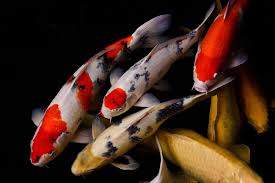
Kohaku is one of the oldest and most popular koi varieties, recognized for its pure white body adorned with red markings. These red markings can vary from small spots to large patches, ideally balanced across the body. High-quality Kohaku are characterized by deep, uniform red and sharp edges (kiwa) where the red meets the white. The red should not spread into the fins, and the white should be spotless and free of any yellowing. Kohaku can typically grow between 24-36 inches. This variety is often the first to be bred for shows, serving as a foundational fish for many koi enthusiasts. The simplicity of the Kohaku's colors makes it a favorite for appreciating the beauty of koi.
Size: 24-36 inches
Quality Indicators: 25-35 years
Distinctive Traits: White body with red markings
Taisho Sanke (Sanke)
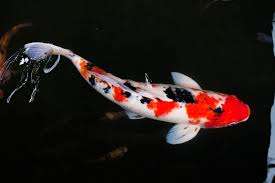
Taisho Sanke, commonly referred to as Sanke, features a white body decorated with red (hi) and black (sumi) markings. The red and black patterns should be well-balanced, with the black primarily on the body and not extending to the head. Quality Sanke koi exhibit clear, bright white skin, vibrant red, and deep black markings. The white should be spotless, and the colors should not bleed into each other. Sanke koi can grow up to 36 inches, making them a striking addition to any pond. This variety combines elegance and a lively pattern, making it highly prized in koi collections. Originating in the Taisho era, Sanke has remained a staple in koi breeding.
Size: 24-36 inches
Lifespan: 25-35 years,
Distinctive Traits: White body with red and black (sumi) markings.
Showa Sanshoku (Showa)
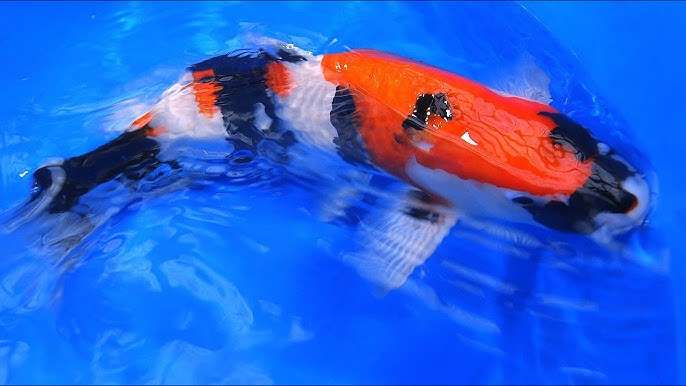
Showa Sanshoku, or simply Showa, is distinguished by its black (sumi) body with red (hi) and white markings. The black should dominate, with the red and white markings well-balanced across the body, including black on the head. High-quality Showa koi have deep black, vibrant red, and pure white colors, with the three hues clearly defined and not blending into one another. Showa koi can typically reach 28-36 inches in length. This variety is known for its dramatic and bold coloration, making it a standout in any koi pond. The modern Kindai Showa has more white, offering a brighter appearance while maintaining the traditional Showa's striking contrast.
Length: 28-36 inches
Lifespan: 25-35 years,
Distinctive Traits: Black body with red and white markings.
Utsurimono (Utsuri)
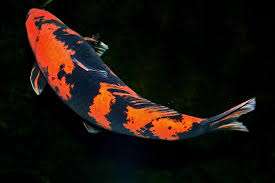
Utsurimono, or Utsuri, has a striking black (sumi) body with contrasting white, red, or yellow markings. This variety includes Shiro Utsuri (black and white), Hi Utsuri (black and red), and Ki Utsuri (black and yellow). The base color is always black, providing a dramatic background for the other colors. High-quality Utsuri have bold, well-defined markings that create a stark contrast with the black. These koi can grow to be between 24-36 inches long. Utsuri are known for their unique and captivating patterns, often resembling ink paintings. This variety's bold appearance makes it a favorite among koi enthusiasts who appreciate its striking visual impact.
Length: 24-36 inches
Lifespan: 25-35 years
Distinctive Traits: Black body with white, red, or yellow markings.
Asagi
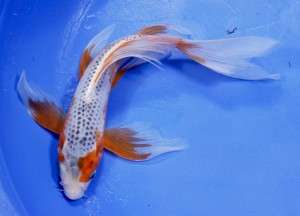
Asagi koi feature a light blue or gray body with red or orange accents on the belly, fins, and gill plates. The blue scales should have a net-like (reticulated) pattern, adding a delicate and intricate appearance. The red or orange should be uniform and not bleed into the blue. Asagi koi are known for their calm and serene coloration, which can be a beautiful contrast in a koi pond. These koi typically grow to 28-36 inches. High-quality Asagi have a clean and clear blue color with vibrant red highlights. This variety's elegant and traditional appearance has made it a beloved choice for koi enthusiasts around the world.
Length: 28-36 inches
Lifespan: 25-35 years
Distinctive Traits: Light blue or gray body with red or orange on belly, fins, and gill plates, with net-like (reticulated) blue scales.
Shusui
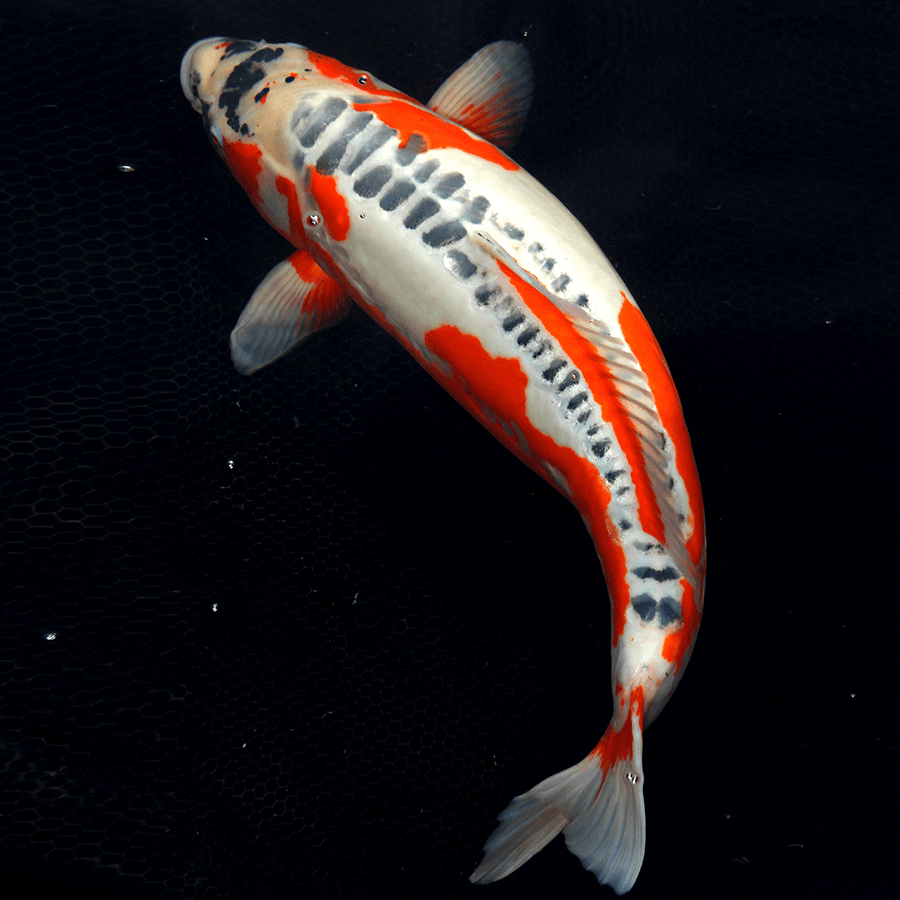
Shusui is the scaleless (doitsu) version of Asagi, characterized by a blue or gray body with red or orange markings. The back of the Shusui should have a clear, scaleless line with distinct blue and red patterns. The red or orange typically appears on the belly, fins, and gill plates, similar to Asagi. Shusui can grow to be 28-36 inches long. This variety is prized for its clean and smooth appearance, with the lack of scales creating a unique and striking look. High-quality Shusui have vibrant colors and a clear, defined pattern. This koi's elegant and modern look makes it a favorite in many koi ponds.
Length: 28-36 inches
Lifespan: 25-35 years
Distinctive Traits: Scaleless (doitsu) Asagi with blue or gray body and red or orange markings.
Bekko
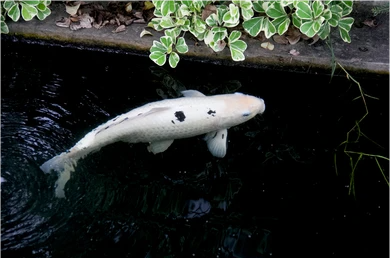
Bekko koi have a solid white, yellow, or red body with distinct black markings. This variety includes Shiro Bekko (white and black), Aka Bekko (red and black), and Ki Bekko (yellow and black). The base color should be clean and solid, with well-defined black markings that do not blend into the base color. Bekko koi typically grow to 24-30 inches. High-quality Bekko have clear and bold patterns, with a balanced distribution of black markings. This variety's simple yet striking appearance makes it a favorite among koi enthusiasts who appreciate its understated elegance. Bekko koi are known for their calm and graceful demeanor.
Length: 24-30 inches
Lifespan: 25-35 years,
Distinctive Traits: Solid white, yellow, or red body with black markings.
Goshiki
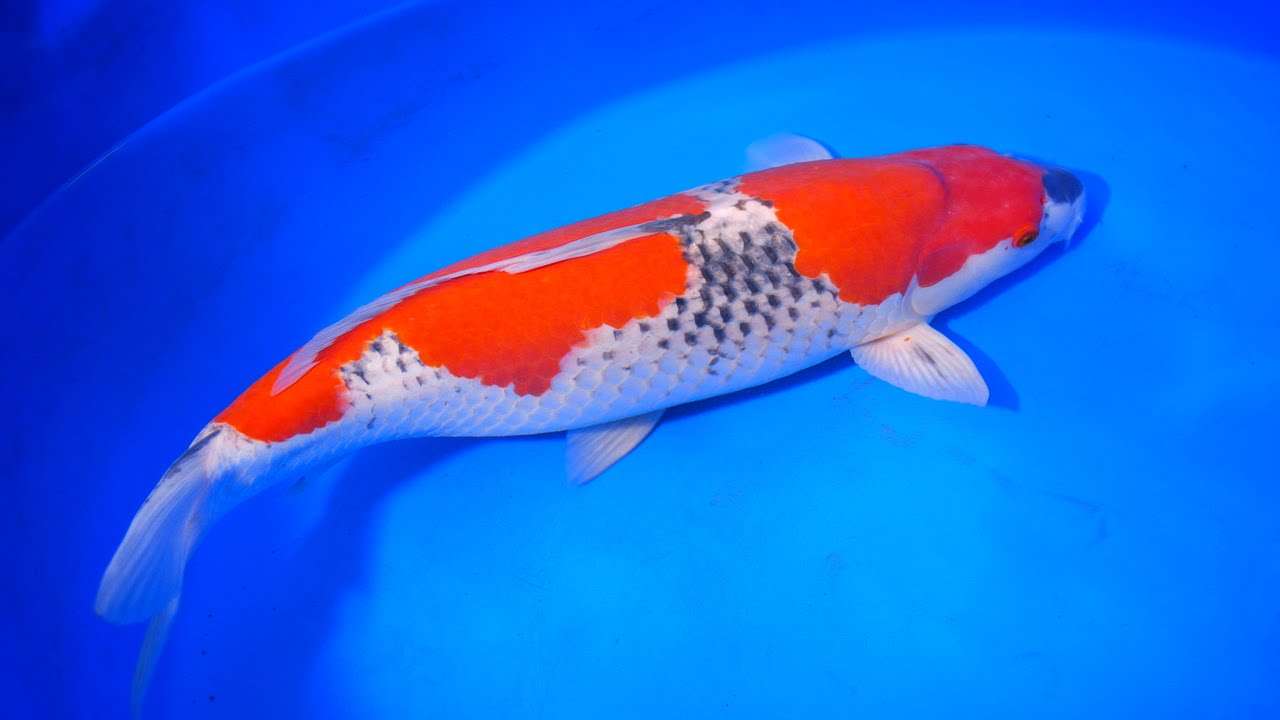
Goshiki koi have a white body with a mix of blue, red, black, and dark gray markings. The body should have a balanced mix of colors with a net-like (reticulated) pattern on the scales. The red markings are usually prominent and can appear on the head, body, and fins. Goshiki koi can grow to be 24-30 inches long. High-quality Goshiki have vibrant and well-defined colors, with a clear net-like pattern. This variety is known for its unique and multi-colored appearance, making it a standout in any koi pond. Goshiki's beautiful and intricate patterns make it a favorite among koi collectors.
Length: 24-30 inches
Lifespan: 25-35 years,
Distinctive Traits: White body with mix of blue, red, black, and dark gray markings, often with a net-like pattern.
Hikari Muji (Ogon)
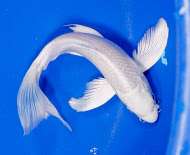
Hikari Muji, also known as Ogon, are koi with a solid metallic color, typically gold, platinum, or orange. This variety includes Yamabuki Ogon (gold), Platinum Ogon, and Orenji Ogon. The color should be uniform and metallic, with no other markings. Hikari Muji koi are known for their shimmering and reflective scales, which create a stunning visual effect in the water. These koi can grow to 24-30 inches. High-quality Hikari Muji have a bright and consistent metallic color, with smooth and clean scales. This variety's striking and luminous appearance makes it a popular choice for koi enthusiasts who appreciate its dazzling beauty.
Length: 24-30 inches
Lifespan: 25-35 years
Distinctive Traits: Solid metallic color (gold, platinum, or orange) without additional markings.
Conclusion
In conclusion, the world of koi fish encompasses a diverse array of types, each distinguished by its unique colors, patterns, and characteristics. From the classic purity of Kohaku with its white body and red markings to the dramatic contrast of Showa Sanshoku's black, red, and white patterns, every variety of koi offers a visual feast for enthusiasts and collectors alike. The elegant Asagi with its net-like blue scales, the striking metallic sheen of Hikari Muji (Ogon), and the sleek, scaleless appearance of Doitsu koi further illustrate the breadth of beauty and craftsmanship in koi breeding. Whether admired for their serene elegance or vibrant contrasts, each type of koi fish represents centuries of careful cultivation and appreciation, making them not just ornamental fish, but living works of art in ponds around the world.






